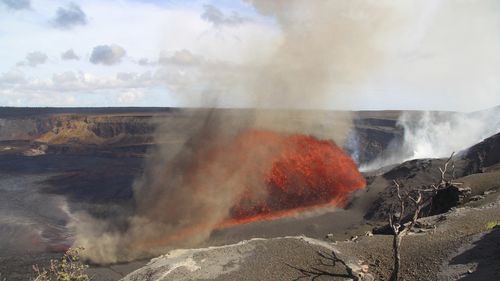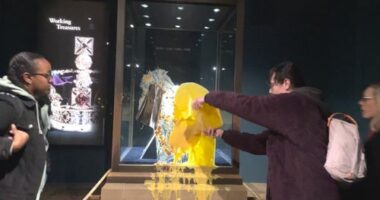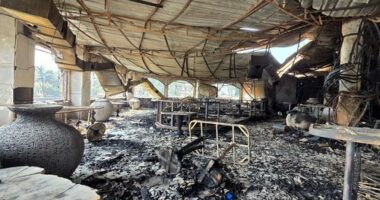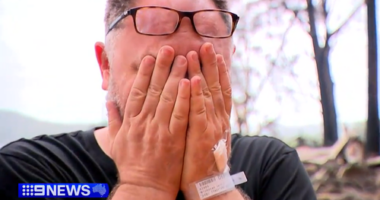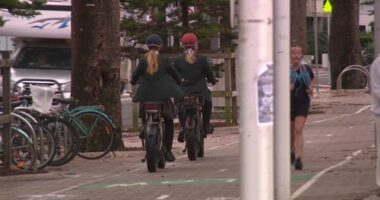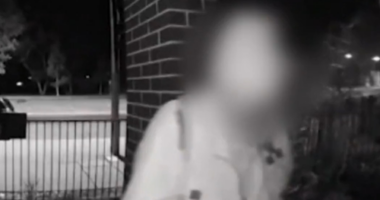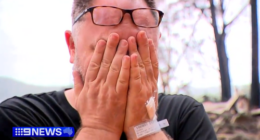Share this @internewscast.com
This marks the 31st eruption of Kilauea since December, a testament to its status as one of the most active volcanoes in the world.
Lava began to spatter continuously from the north vent at the summit crater in the morning, with the overflow occurring a few hours later. By the afternoon, the vent was noticeably shooting fountains of lava.

The eruption was contained within the summit crater, and no homes were threatened.
Some lucky locals and tourists can enjoy the spectacle firsthand at Hawaii Volcanoes National Park. Meanwhile, countless others will likely tune in to the popular livestreams, courtesy of three U.S. Geological Survey cameras capturing the event.
Park Service volunteer Janice Wei, upon hearing news of the lava’s return, quickly captures photos and videos of Halemaumau Crater—traditionally considered the residence of the Hawaiian volcano goddess Pele.
She describes the sound of high-shooting lava as resembling either a roaring jet engine or crashing ocean waves, and claims she can feel its heat from over a mile away.
âEvery eruption feels like I am sitting in the front row at natureâs most extraordinary show,â Wei said in an email.
Kilauea is situated on Hawaii Island, the largest island in the Hawaiian archipelago. It’s located approximately 200 miles (320 kilometers) south of Honolulu, the state’s largest city, which is on Oahu.
Hereâs what to know about Kilaueaâs latest eruption:
Towering fountains of molten rock
A lower magma chamber under Halemaumau Crater is receiving magma directly from the earthâs interior at about 5 cubic yards (3.8 cubic meters) per second, said Ken Hon, scientist-in-charge at the Hawaiian Volcano Observatory.
This blows the chamber up like a balloon and forces magma into an upper chamber. From there it gets pushed above ground through cracks.
Magma has been using the same pathway to rise to the surface since December, making the initial release and subsequent episodes all part of the same eruption, Hon said.
Many have featured lava soaring into the air, in some cases more than 1,000 feet (300 meters). The fountains are generated in part because magma â which holds gases that are released as it rises â has been travelling to the surface through narrow, pipelike vents.

The expanding magma supply is capped by heavier magma that had expelled its gas at the end of the prior episode. Eventually enough new magma accumulates to force the degassed magma off, and the magma shoots out like a Champagne bottle that was shaken before the cork was popped.
This is the fourth time in 200 years that Kilauea has shot lava fountains into the air in repeated episodes. There were more episodes the last time Kilauea followed this pattern: The eruption that began in 1983 started with 44 sessions of shooting fountains.
Those were spread out over three years, however. And the fountains emerged in a remote area, so few got to watch.
The other two occurred in 1959 and 1969.
Predicting Kilaueaâs future
Scientists donât know how the current eruption will end or how it may change.
In 1983 magma built enough pressure that Kilauea opened a vent at a lower elevation and started continuously leaking lava from there rather than periodically shooting out of a higher elevation. The eruption continued in various forms for three decades and ended in 2018.
Something similar could happen again. Or the current eruption could instead stop at the summit if its magma supply peters out.
Scientists can estimate a few days or even a week ahead of time when lava is likely to emerge with the help of sensors around the volcano that detect earthquakes and minuscule changes in the angle of the ground, which indicate when magma is inflating or deflating.
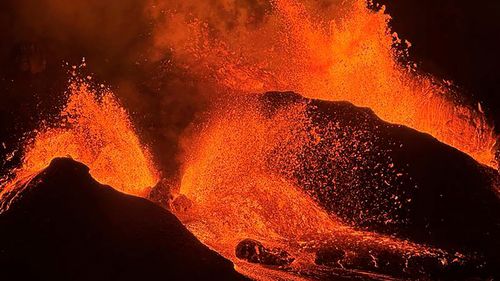
âOur job is like being a bunch of ants crawling on an elephant trying to figure out how the elephant works,â Hon said.
The lava fountains have been shorter lately. Steve Lundblad, a University of Hawaii at Hilo geology professor, said the vent may have gotten wider, leaving molten rock less pressurised.
âWeâre still gonna have spectacular eruptions,â he said. âTheyâre just going to be wider and not as high.â
Some people may see lava flows as destructive. But Huihui Kanahele-Mossman, the executive director of the Edith Kanakaʻole Foundation, said lava is a natural resource that hardens into land and forms the foundation for everything on Hawaii Island.
Kanahele-Mossmanâs nonprofit is named after her grandmother â the esteemed practitioner of Hawaiian language and culture and founder of a noted hula halau, or school.
HÄlau o Kekuhi is celebrated for its mastery of a style of hula rooted in the stories of Pele and her sister, HiÊ»iaka.
Kanahele-Mossman has visited the crater a few times since the eruption began. She initially watches in awe and reverence, but then she observes more details so she can go home and compare it to the lava in the centuries-old tales that her school performs.
While at the crater, she also delivers a chant prepared in advance and places offerings. Recently she presented awa, a drink made with kava, and a fern lei.
âYou as the dancer, you are the storyteller and you carry that history that was written in those mele forward,â she said, using the Hawaiian word for song.
âTo be able to actually see that eruption thatâs described in the mele, thatâs always exciting to us and drives us and motivates us to stay in this tradition.â
